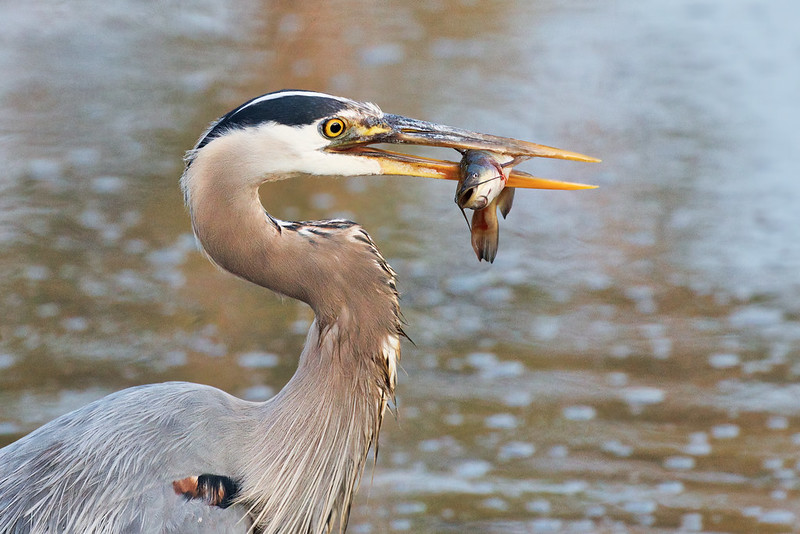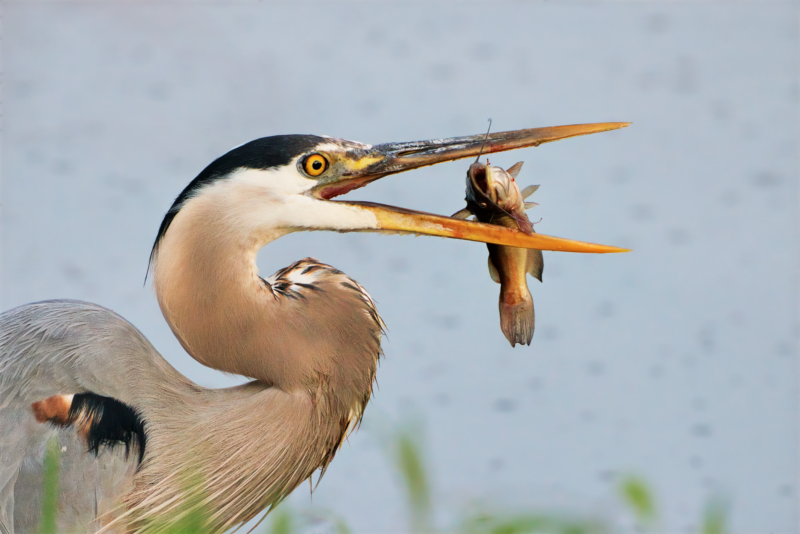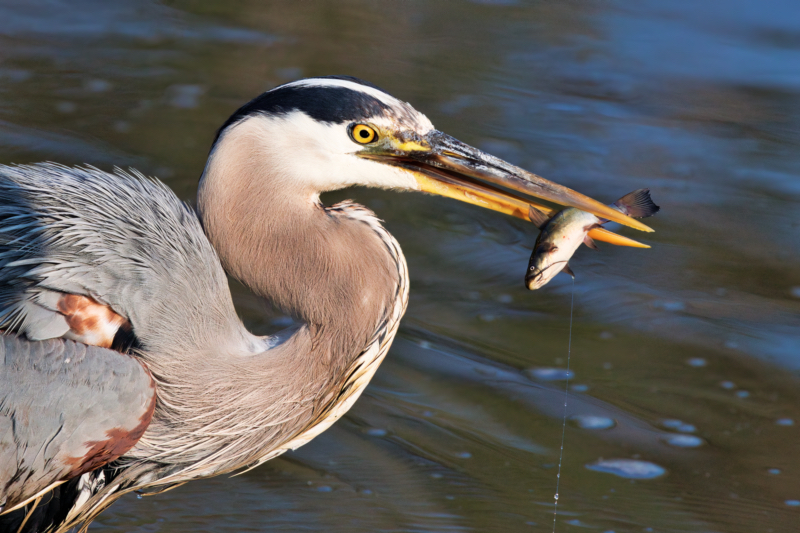Today’s featured photo captures a captivating moment between a Great Blue Heron and a Catfish. I had the pleasure of capturing this shot at Miner’s Cove, a location nestled within the Sequoyah National Wildlife Refuge in Oklahoma. Lately, both Great Blue Herons and Great Egrets have been frequenting Miner’s Cove more often due to the receding water levels. This fortunate circumstance has provided the birds with ample opportunities to indulge in the plentiful crawdads and fish that thrive in the area.

Personally, I find the Great Blue Herons particularly fascinating to photograph because of their ability to capture larger prey. Witnessing these majestic birds skillfully consume a Catfish never fails to astound me, especially considering the formidable spines that adorn the fish’s body.
How a Great Blue Heron Conquers a Catfish with Spines
The Great Blue Heron’s ability to consume and swallow a catfish, even with its potentially dangerous spines, is an incredible testament to its remarkable adaptations and feeding strategies.
As the Great Blue Heron secures its hard-earned catch, its sharp eyesight and precise movements become paramount. The heron is well aware of the potential hazards presented by the catfish’s venomous spines. With years of experience and instinctual knowledge, it skillfully maneuvers the catfish to minimize the risk of injury.
To begin the process, the heron typically repositions the catfish in its beak, ensuring that the spines are aligned in a way that minimizes contact with delicate tissues. The heron’s beak is specialized for grasping and manipulating prey, featuring a sharp, pointed tip and a robust structure.
With patience and finesse, the heron begins the delicate task of consuming its prize. It may employ a series of precise movements, such as flipping the catfish to expose its soft belly or manipulating it to align the spines away from vulnerable areas of its throat.

The heron’s long, slender neck allows it to extend and flex, facilitating the gradual process of swallowing the catfish. The heron’s esophagus is remarkably flexible and can expand to accommodate prey items of various sizes. As the heron tilts its head back and opens its bill wide, the catfish is gradually guided down the throat, inch by inch.
While the catfish’s venomous spines may present a potential threat, it’s important to note that the Great Blue Heron has adapted to this challenge over time. The heron’s digestive system is well-equipped to handle such obstacles. Its stomach contains strong acids and muscular contractions that aid in breaking down and processing the catfish’s tough and potentially harmful spines.

Through a combination of careful maneuvering, anatomical adaptations, and digestive capabilities, the Great Blue Heron successfully overcomes the potential dangers posed by the catfish’s poison spines. It’s a testament to the heron’s remarkable abilities and serves as a reminder of nature’s intricate balance, where both predator and prey have evolved strategies to coexist and survive in their respective roles.
To capture this remarkable moment, I positioned myself comfortably inside my pickup truck, conveniently parked by the roadside. From this vantage point, I had an optimal view of the heron as it effortlessly clutched the Catfish in its beak.
